Content clusters are groups of related content that cover a broad topic collectively. They organize content contextually through strategic internal linking, which improves user experience and builds solid topical authority to boost search performance.
The cluster topics (subtopics) surround a pillar page and are chosen based on what people search for on the internet or what they want to learn about the subject. Content clusters aim to cover the main topic in great depth and breadth. At the same time, these subtopics are tied to keywords to ensure they have enough ranking potential.
Many marketers are still not woke to the benefits of topic clusters, so even if you feel you’re late to the party, you can still get the early bird advantage. Let’s see how you can do that.
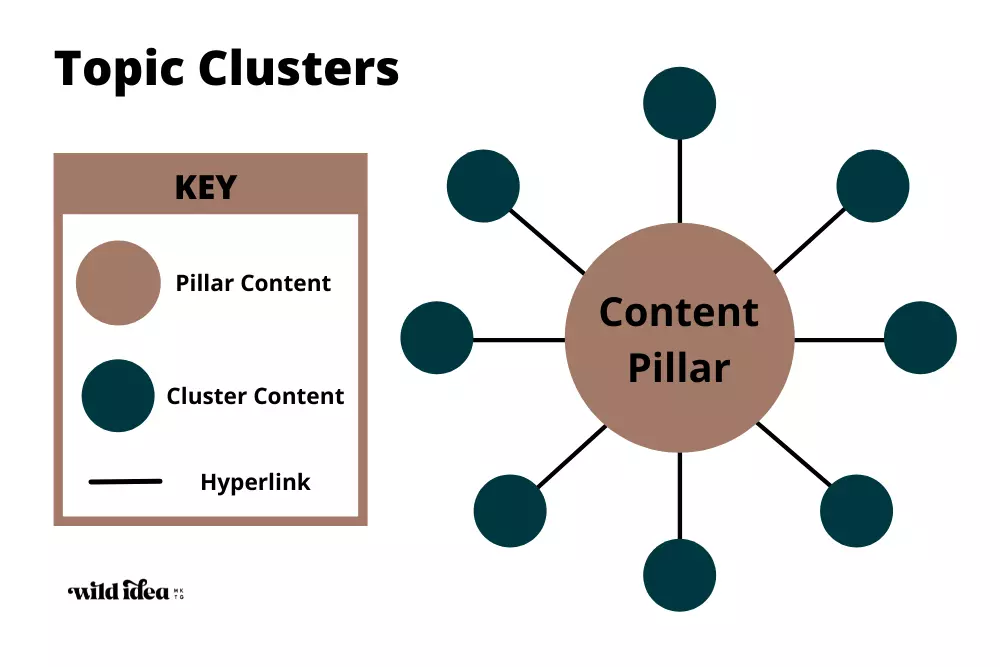
What are Content Clusters (AKA Topic Clusters)?
Perhaps the best way to understand content clusters is to look at how most content is created on the internet.
Content creators perform extensive keyword research and create content around valuable keywords relevant to their niche. As a result, they build a huge library of excellent content. But, have you ever wondered how a library would look if the books weren’t arranged in any specific order? Finding a book in such a library would be like finding a needle in a haystack.
When Google crawls unorganized content to find a solution for the searcher, it attempts to make sense of your content based on its algorithms. It indexes your content according to what it feels is the correct category.
Instead of leaving it up to Google to decide what your content is about, you can tell the search engine exactly where to categorize it by adopting the Cluster-Pillar strategy. This strategy has three main components: pillar page, cluster content, and internal links.
What Is Pillar Content?
Pillar pages are an integral part of the pillar-cluster strategy. These are individual pages or articles that cover the main topic completely so that they are 10X more authoritative than any other online resources on the subject.
It links to all the cluster pages on that topic and all the cluster pages link to it. The pillar page and cluster content positions you as an authority on the topic and organizes your content in a meaningful way for both users and search engines.

Why Topic Cluster Matter to SEO
Any marketer or content strategist creating content for search engine optimization (SEO) must explore and adopt topic clusters. Their impact on common KPIs used in reporting‒keyword rankings, traffic, conversions, engagement, pages per session‒is enormous.
Cluster content must be a part of your content plan in order to boost your SEO efforts and get the most out of your digital marketing efforts.
One of the best examples of benefiting from content clusters is Byrdie. Byrdie has 66 different blog posts alone on ‘piercing’ ranking for over 26,000 keywords combined and responsible for bringing in over 1.4 million monthly visits.

Search patterns have changed. People no longer type in exact keywords or keyword fragments to get the right answers to their queries. They ask complex questions, and Google can provide precise and rapid responses.
It all started with the Hummingbird algorithm update that allowed Google to process sentences instead of just sets of keywords. We can say that this change sets the tone for topical focus. Fast forward to 2015, when the RankBrain update brought machine learning into the mix. Now Google could understand the context of the search queries and show results based on previous searches made by the users related to a similar theme.
In 2019, BERT rolled out and improved contextual understanding of search queries through natural language processing (NLP). In other words, BERT allows Google to understand a complete search phrase and match it to keywords for extracting results. It can also present subtopics of interest to the searcher when they input a broad keyword like “dog leash” in the search box. The user gets a wider range of content right on the SERP, such as best dog leash, electronic leash, premium picks, etc.
Businesses that invest in cluster pages are able to take advantage of this update since they’ll have a better chance of qualifying for such subtopic search result suggestions.
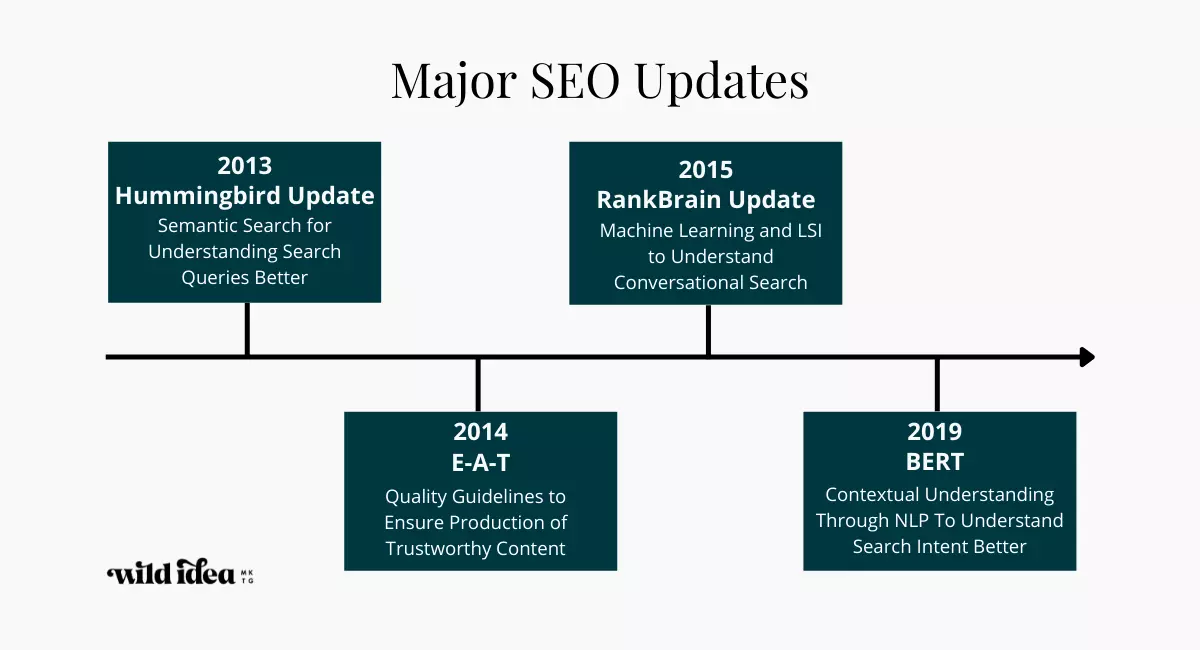
Topic Clusters Enhance Context, Relevance, And Authority
Google judges the context of your content through on-page SEO elements like title tags, URLs, headings, subheadings, sentences, links, and their anchor text.
Since topic clusters are naturally related to each other, they are an excellent means of helping Google understand the context of your content and how it may fit in the hierarchy of other content on a similar topic. As mentioned earlier, the sheer number of related content pieces on the same topic also builds your authority.
Topic Clusters Improve Keyword Research
There are two kinds of keyword research mistakes that people can make. There are those who target high-volume keywords without considering topical authority or where their content fits in the buyer’s journey. Often, these content pieces have huge gaps and may feel disconnected from one another.
Others obsess over long-tail keywords and end up creating overlapping content. Their visitors will often lose interest due to repetitive, low-value content.
In a pillar-cluster strategy, keyword research involves identifying a list of keywords for each topic and segmenting them into groups of related keywords. Each group is addressed by smaller cluster content pieces that tackle each subtopic separately. Consequently, you get unified content without any gaps or repetitions.
Topic Clusters Improve UX And Conversions
The ultimate goal of any piece of content is to covert the traffic that lands on your website. Helpful content that consistently solves people’s problems at any stage of the buyer’s journey is the key to conversion and retention.
Similarly, a good user experience (UX) means people get what they expect. For the content to fulfill this, it must fulfill the search intent. Content clusters enable you to create content that targets searchers’ pain points at different funnel stages. When your content meets the expectations of the searchers every time, they stay longer on your website consuming your content, and when it’s time to buy, guess who’d they prefer and trust‒you, of course!

How To Create A Topic Cluster
The content cluster module has many benefits, but you need to plan out your topics and sub-topics carefully and link them strategically to be effective. Here’s a step-by-step guide for creating topic clusters like a pro:
Step 1: Pick The Right Topics
Picking suitable topics is half the battle in creating cluster content. However, don’t let it bog you down. A quick and simple way to identify these core topics is to get started with your money pages. Any page on your website that has a high probability of generating revenue is a money page. Typically, they are product or service pages and your informational content needs to be tied to them because the end goal is always to raise awareness about your offerings.
- So, first, identify your money pages.
- Dive deep and identify your core services or products.
- Now keeping your audience’s interest in mind, identify as many topics as you can for each service and product.
- Not start organizing these topics into related groups and eliminate or merge the repetitive ones.
To come up with a comprehensive list of topics, you can input some broad search terms in Google and get clues from the autocomplete or SERP features like People Also Ask (PPA) or People Also Search. You can also use tools like Ahrefs and Answer The Public.
While you’re at it, it’s a good idea to match the topics to their position in the sales funnel. Whether they’re suitable for the TOFU, MOFU, or BOFU content will help you identify the search intent related to those topics.
Then you can create content so that it resonates better with the audience in that particular position in the funnel. If your content fulfills the audience’s needs at each funnel stage, it will be easier to help them slide down the sales funnel and convert.
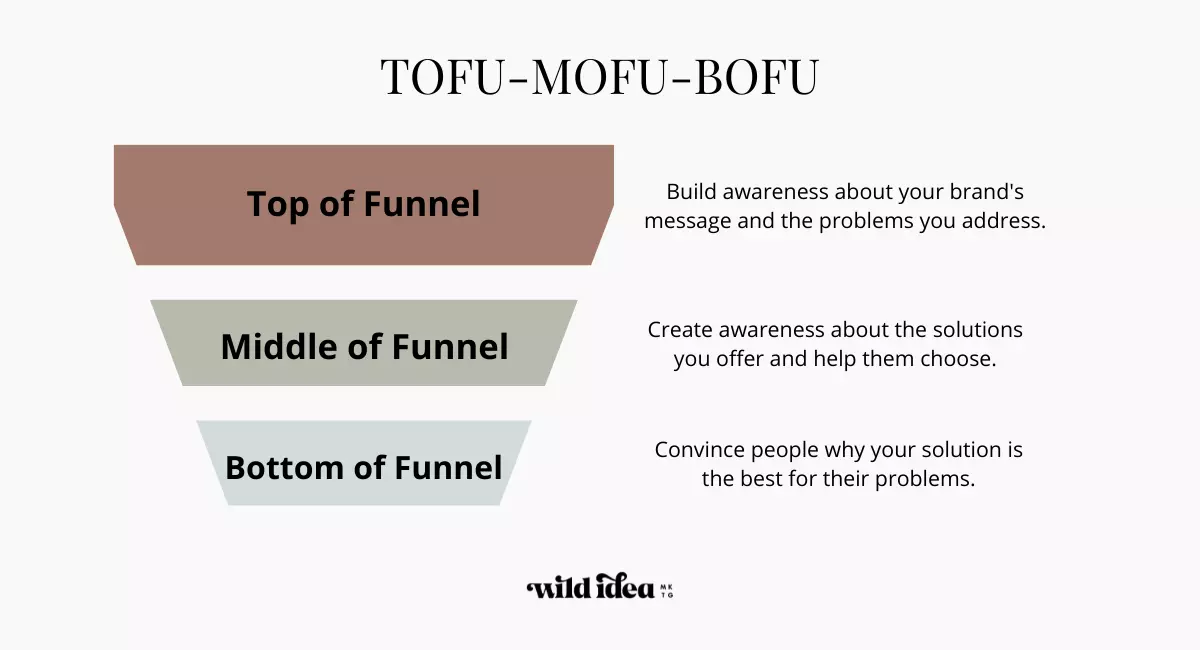
Step 2: Match Keywords to Selected Topics
Nothing can diminish the importance of keywords. No matter how well you’ve identified and organized your topics, you should build your content on the foundation of keyword research. Keyword research will ensure that you don’t waste your time writing about topics that no one’s searching about.
Here are a few ways you can do it:
- Search keywords related to the subtopics you identified.
- Identify informational keywords related to your transactional pages.
- Compare the keywords you’re ranking for with your competitors and find gaps that you can fill.
Once you have your list of keywords, analyze it to isolate the keywords you can rank for and match them to your selected topics. You can use tools like Ahrefs Keyword Generator, SEO Surfer, or Keywordtool.io to find keywords related to your topics.
Step 3: Outline Pillar-Cluster Structure for Core Topics
Now that you have all the core topics, subtopics, and matching keywords sorted out, it’s best to create their outlines before you begin writing them. Creating content outlines for the pillar and cluster topics before writing will ensure that each topic is covered in ample depth without repetition.
- Pillar page outline: Create an outline for the pillar page first because all the cluster content will link to this page. Cover a broad range of topics on the pillar page to naturally link it to the cluster pages but still leave enough room for an in-depth discussion in cluster pieces.
- Cluster content outline: The cluster content outlines should dive deep into the subtopic but also include relevant topics to make room for internal links to the pillar page and other cluster pages.
These outlines will serve as content templates for each piece, complete with headings, subheadings, a list of keywords, inspiration articles, and word count.
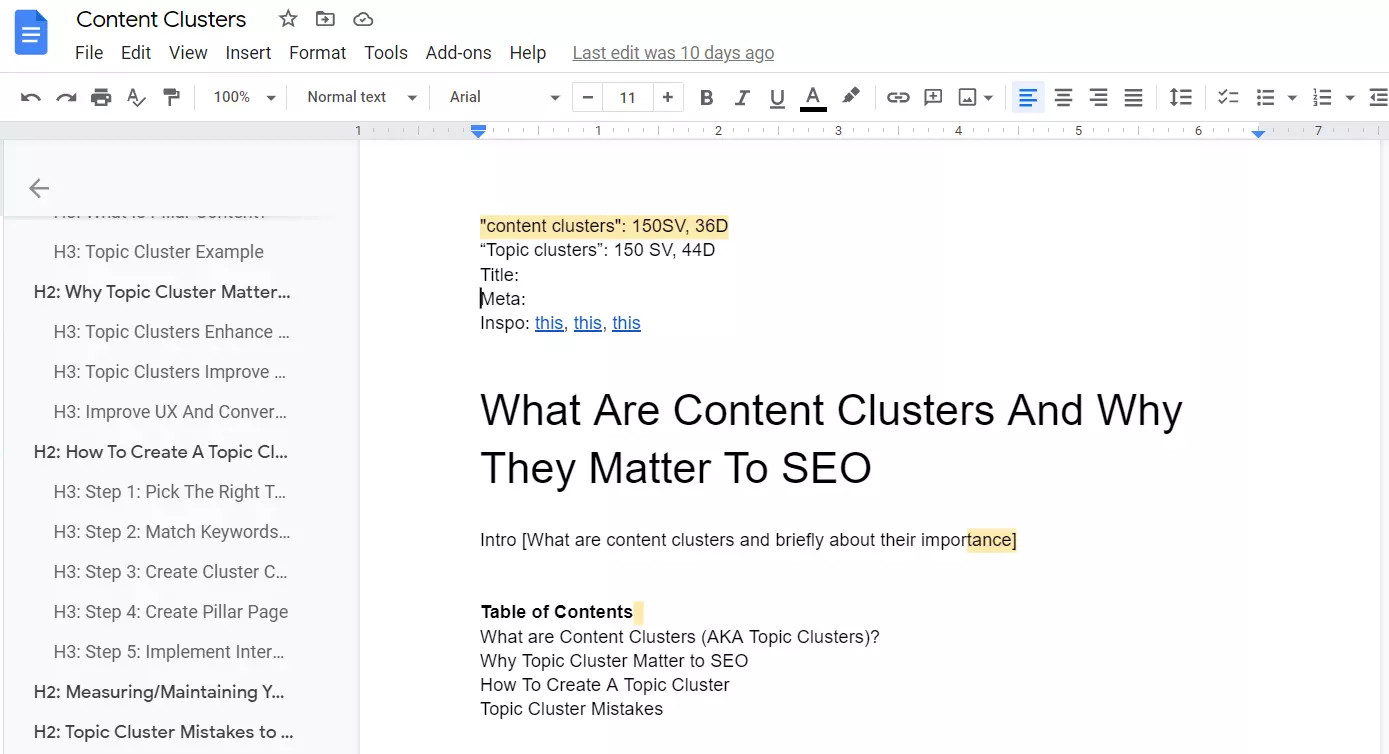
Step 4: Create Cluster Content
After you have your keywords and outline ready, it’s time for you to produce content. Since your competitors are also writing on the same topics, here are some tips to make sure yours stand out and engages your audience effectively.
- Stick to your voice: You likely devised a unified brand voice when creating your content strategy. Make sure your content reflects that voice so that your audience can remember you.
- Personalize your content: Instead of singing the same tune, make sure your content reflects your beliefs and ideology even if they’re dissenting. Create a signature way of doing things and present your unique methodology to your audience instead of the same cookie-cutter solutions.
- Avoid keyword stuffing: Let the content flow naturally and include keywords and their variations where they fit organically. Don’t force a point just to add a keyword or a link.
- Focus on quality: Quality means that the content must fulfill the searchers’ intent. Moreover, it should be factual, on-topic, engaging, and authoritative.
- Check readability: Be clear and concise in what you write. Use simple words and small sentences to get the points across.
- Upgrade imagery: One way to elevate your content from competitors is to improve the images and videos they’ve used in their content. Make sure to add alt image attributes to improve SEO.
- Use research and data: Strengthen your arguments with research and statistics, and add links to those research and data studies to build trust.
Step 5: Create a Pillar Page and Implement Internal Linking
You might be tempted to write the pillar page before the cluster content, but it becomes easier and more efficient to work on pillar content once you’ve created all the cluster content. It will prevent you from adding too many details about the subtopics and cannibalizing your clusters’ search rankings. You will also be able to implement internal linking better in this way.
You may link your pillar and cluster pages any way you want. Just keep two points in mind:
- All cluster pages must link to their pillar page and vice versa.
- Do not link your cluster pages to the pillar pages of other content clusters.
Proper linking will help page rank spread effectively throughout your cluster content, and we can help you do that by taking care of your internal linking strategy.

Measuring/Maintaining Your Topic Clusters
Your work doesn’t end with successfully implementing the cluster and pillar content. Now you should measure the success of your cluster content. Some of the metrics you can track include the following:
- Keyword movements
- Monthly traffic
- Conversions
- Time on site
- Bounce rate
Based on the analytics and their results, you will need to add more content to your clusters, move around the internal links, or update existing pages to keep your website content fresh and up-to-date.

Topic Cluster Mistakes to Avoid
The two most common mistakes content creators make when creating content clusters are siloing, and keyword cannibalization, also called content flooding. Let’s look at them briefly and see how you can avoid them.
Siloing
Siloing occurs when you don’t link your topic clusters with each other intentionally to concentrate relevance. As a result, you miss out on valuable internal linking opportunities. When Google bots crawl your website, they miss the relevance and fail to pass on PageRank. Neither users nor search engines can see the relationships between your content clusters consequently.

Keyword Cannibalization
Also known as content flooding, keyword cannibalization happens when you create too many blog posts targeting the same or similar keywords.
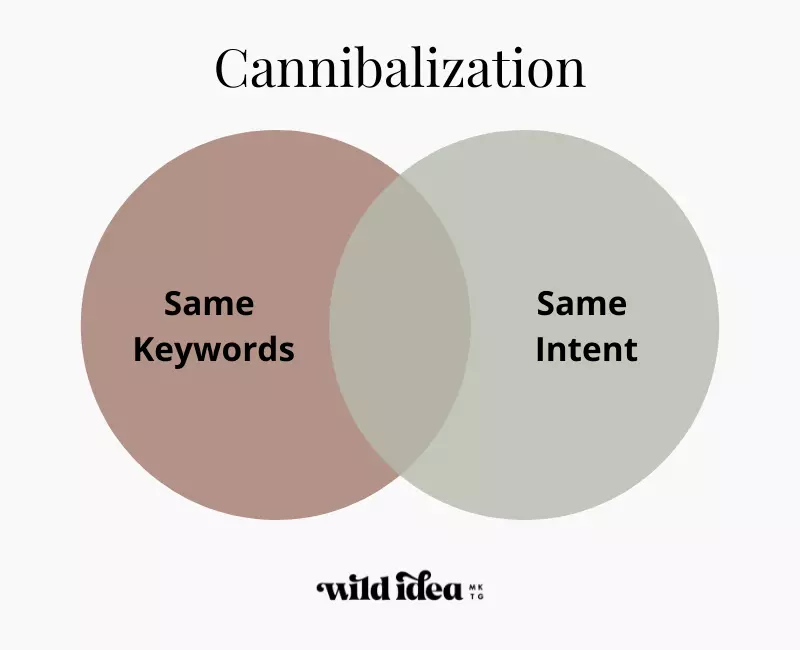
For instance, you might create a pillar page on skincare, and then your cluster pages revolve around topics like:
- Skincare routine for men
- Skincare routine for women
- Skincare routine for old age
- Skincare routine for acne-prone skin
Each of these cluster pages targets the same general keyword, skincare routine, and thus, they compete for the same keyword in terms of ranking. This phenomenon is called keyword cannibalization.
You can avoid this by creating cluster content around unique keywords with different search intents.
Here’s an excellent example of how you can tackle the above skincare example properly:
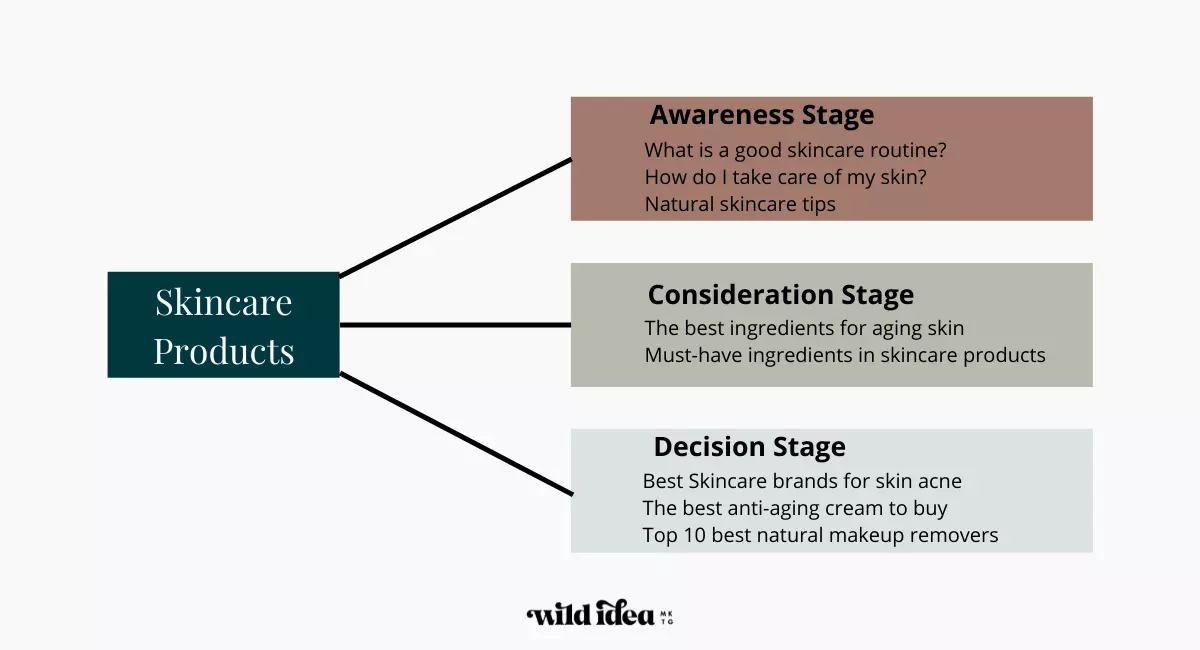
It may feel intimidating to decide on the topics for creating content clusters, at first. However, once you implement your content clusters, you will see an enormous boost in your SEO and content performance.
It’s crucial to keep auditing and update your content pillars by adding more cluster content to meet the changing needs of your audience. Keep track of the content performance through various KPIs and if it all feels too daunting, contact us, and we will help you create, implement and monitor your content strategy so you can relax and focus on business growth.
Karli is content marketing consultant behind Wild Idea, a content marketing and SEO collective focused on driving big results. With over 12 years in the marketing industry, she’s worked with brands large and small across many industries to grow organic traffic and reach new audiences. She writes on everything from marketing, social, and SEO to travel and real estate. On the weekends, she loves to explore new places, enjoy the outdoors and have a glass or two of vino!






